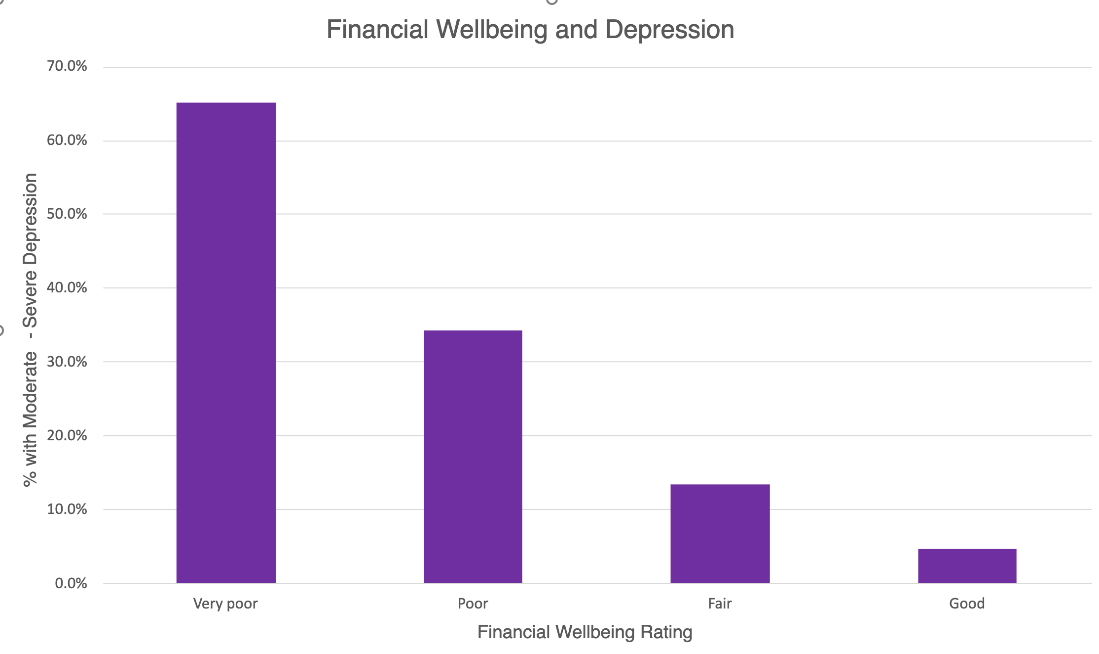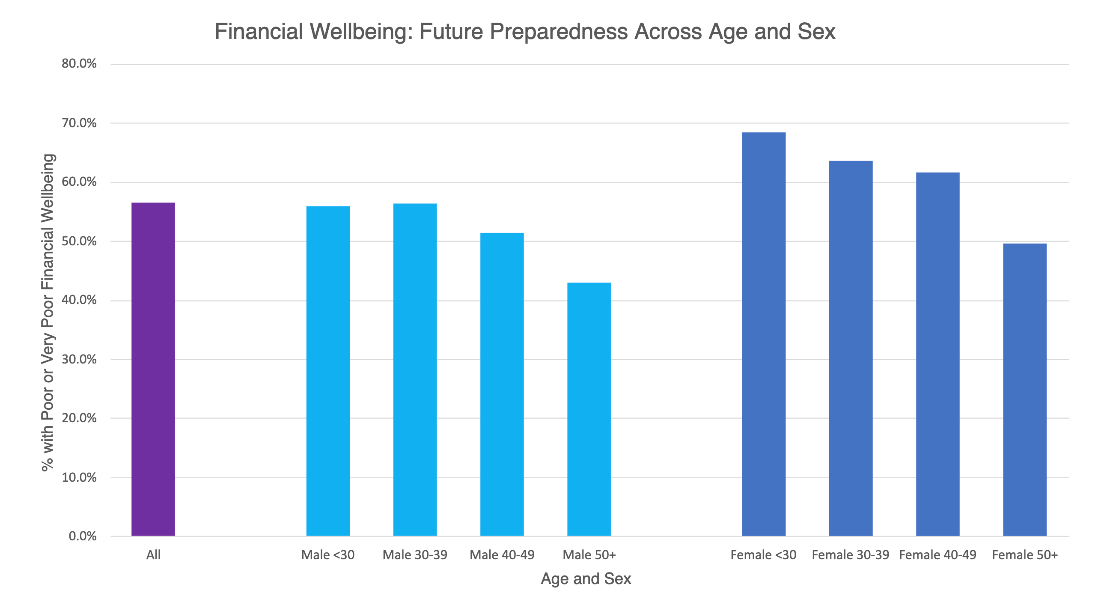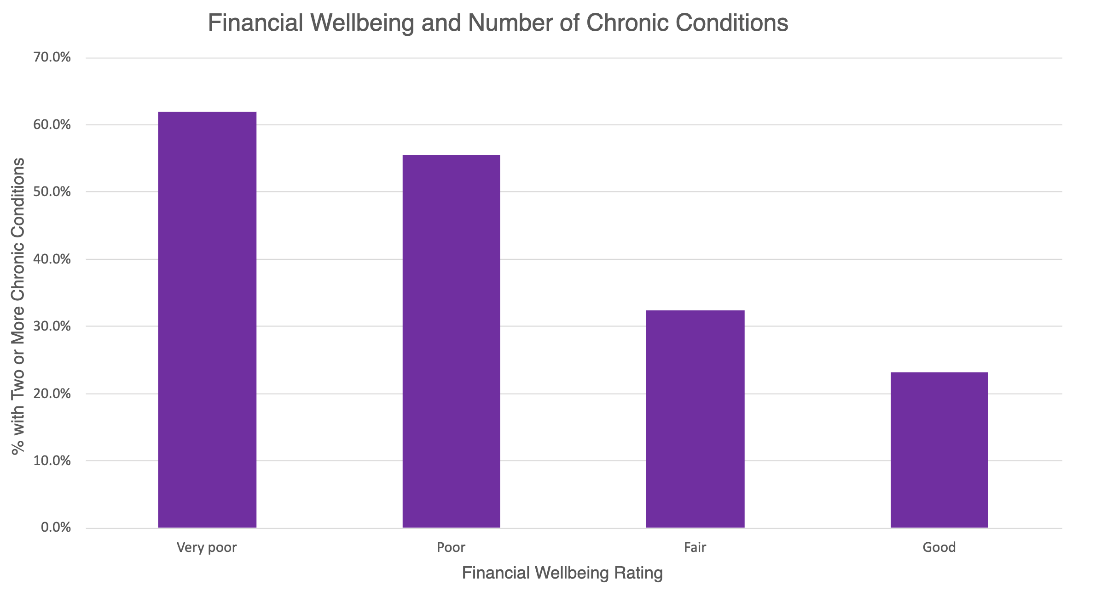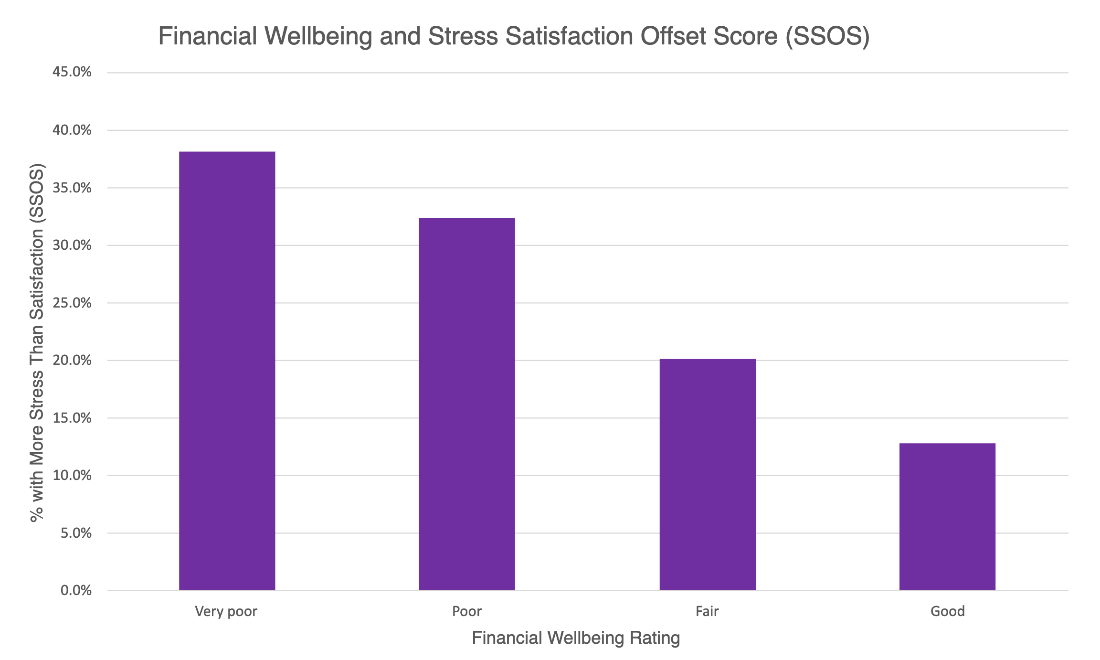Financial Wellness in the Workplace: A Healthy Investment
Employees with poorer financial well-being find more stress than satisfaction at work

As we tentatively come out from under the cloud of Covid, many in the workforce can’t shake the anxiety that they previously related to the virus, vaccinations and infections. As those topics fade, another seems to have grown: financial stability, or a lack thereof. Growing numbers of employees are struggling with personal finances, either relating to personal debt, underemployment, inflation, or all of the above.
How does this relate to workplace well-being? Self-reported data from Carebook’s Corehealth Checkpoint (formally called Wellness Checkpoint by Carebook) from January 2021 to December 2021 highlights the fact that there is an association between financial status and health – both mental and physical. For example, the data shows that close to 60% of those with very poor financial well-being have moderate to severe depression. At the same time, just under 5% of those that have good financial well-being experience moderate to severe depression. While it’s unclear if one causes the other, there is clearly an association between economic hardship and poor mental health.

Segmenting the population by age highlights various causes of money-related stress. Younger employees tend to have more issues with personal debt, originating mainly from student loans, in addition to inflation, rising interest rates, an increasing reliance on credit, and in many urban areas, the fading dreams of financial security through home ownership. The resulting financial burden could easily cause stress, anxiety and depression.
Meanwhile, older cohorts now face the rising cost of servicing debt they once thought would be minimized by steady growth in value. And at the upper end of that age group, rising costs are cutting into what seemed to be a sizable nest egg to provide a comfortable retirement. A lack of retirement preparedness can now be another major source of stress.
In fact, data from the assessment referenced above show that 56% of employees rate their future financial preparedness as poor or very poor. More than one in four employees report poor or very poor management of their own current finances. And among employees aged 40 plus, 30% report poor or very poor retirement preparedness.

Mental health isn’t the only thing affected by poor financial standing. The data also shows a connection between finances and physical health: among employees who have very poor financial well-being, over 60% also have two or more chronic illnesses. On the other hand, less than 25% of those with good financial well-being have two or more chronic conditions. Strong finances and good health appear to be related.

Overall, the effects of poor finances can be seen in current levels of stress and anxiety compromising employees’ quality of life and productivity. No workforce can afford to ignore these effects, and certainly, no concerned employer should.
How Employers Can Help Boost Employee Financial Well-Being
Unlike some other health factors, financial well-being is something we may have more control over. And fortunately, there are proven ways employers can help. By focusing on financial wellness in an employee well-being program, organizations can provide access to resources and support, helping employees meet their financial goals. Improving overall employee financial well-being could be as simple as incorporating it into a broader employee well-being program.
Well-being programs are a logical place to introduce financial health content because of the connection between personal finances, mental health, physical fitness, productivity, and overall quality of life. Additionally, good personal finances are associated with better job satisfaction. The same survey data shows that employees with poorer financial well-being find more stress than satisfaction at work, compared to employees with higher financial well-being who tend to find more satisfaction at work and less stress. An employee wellness program that includes content about financial well-being can help with this too.

A Real-Life Example
Let’s look at how it can work in practice.
A senior director at a major Canadian bank discussed his company’s financial wellness endeavors in a 2022 webinar about corporate health and wellness. He stated, “[in our organization] we were meeting the [financial health] benchmark but wanted to do to better. That is the reason we included financial well-being questions in the survey. Data from the checkpoint helped us to zero in on where we could focus: specifically, how we could support [financial] goal setting, tracking progress and being prepared for retirement.”
Their well-being program incorporates four pillars, one of which is financial health. The motivation behind the push on financial wellness includes making sure employees “Have the support to confidently make their short and long-term financial goals a reality,” he stated.
This support likely contributes to the statistic shared from the CoreHealth Checkpoint data, that “86% of team members agree that [leadership] genuinely cares about their well-being.”
CoreHealth Checkpoint data show that if an employee struggles with finances, they’re likely to also struggle with mental health and chronic illnesses. Additionally, difficulties in these areas are also related to greater stress at work and suggest lower productivity and overall quality of life. Fortunately, employers can help. By addressing financial wellness in a broader employee well-being program and providing employees with the resources and support needed to meet their financial goals, they can start a ripple effect, resulting in improved mental health, physical fitness, better productivity, and greater job satisfaction. Now that’s a solid investment.
